In the last few years, I have reviewed more lenses than you could possibly imagine.
My photography students are always asking which lens is right for them, so I spend a significant amount of time looking for lenses that offer superior quality at lower price points.
These are the best inexpensive Canon lenses I could find.
There are many others that I'm sure people will mention in the comments, but only 6 could make the cut for this list.
These lenses are the ones that I recommend very often on the Improve Photography Lens Finder.
I spent thousands of dollars and over a year developing the lens finder.
It basically asks you 5 questions about what lens you want, and then recommends the perfect lens for your situation.
I must mention from the outset that I use “the triad” of lenses (explained later), so I'm comparing the lenses in this list against the highest quality lenses in the Canon system at any price.
In all instances I have found these lenses to perform extremely well with Canon L lenses, but for WAY less money.
This is the good stuff–even when compared to the highest quality lenses money can buy.
Also, I must issue a disclaimer that the word “inexpensive” means different things to different people.
I am using the word “inexpensive” to compare these lenses to the top performing Canon L lenses that are generally priced around $2,000.
Tamron 28-75mm f/2.8 Lens
About a year ago, I had the opportunity to spend some time with a rep from Tamron and spend the day shooting just about all of the lenses in the Tamron lineup.
To be honest, I was not thrilled with most of them.
Most were “acceptable” and one lens was jokingly awful.
I finally couldn't take it anymore and I asked the rep to show me just the one best lens in the Tamron lineup.
He reached for the Tamron 28-75mm f/2.8. Skeptically, I played with it and shot with it for a while.
I was blown away at the quality from this lens.
I found this lens to be extremely close to the sharpness of the $2,400 Canon 24-70mm, and it adds one really impressive feature that the Canon doesn't–it's also a nice macro lens.
For me as a professional photographer, I would definitely take a long hard look at the Tamron 28-75mm before shelling out MORE THAN FOUR TIMES the cost to buy the Canon 24-70.
You can check the current price of this lens on Amazon.
You can also check KEH Camera to see if you can save some money on a REALLY high quality used one.
KEH Camera also has REALLY good financing option!
Canon 70-200mm f/4
Before you get lost in your excitement over the price of this Canon lens, notice that the f/stop only goes down to f/4 instead of the much-desired f/2.8 version of this lens (which costs about $2,500 dollars!).
To have an f/4 maximum aperture is not entirely negative; in fact, it gives you a lighter lens than the f/2.8 version with nearly equal optical quality.
The fast aperture will give you great results all the way through the lens to the edge of the photo.
In fact, many professional photographers who have used the 70-200mm f/2.8 for years are now switching over to this f/4 version to save some money and to lighten their load.
If you haven't used professional lenses before, you may not appreciate just how heavy they are, so saving weight by choosing this f/4 lens is a significant benefit over the $2,500 f/2.8 version of this lens.
This is probably the most popular lens for photographers buying their first professional-grade “L” lens (Canon's marker for their professional quality lenses).
There are two 70-200mm f/4 lenses available for the Canon system. Both are “L” glass, but one has image stabilization and one doesn't.
The image stabilized version is significantly more expensive, but the optical quality is similar between the two versions.
Click here to check the price of the less expensive non-IS version on Amazon, or else you can click here for the much more expensive version with IS on Amazon
You can also check KEH Camera to see if you can save some money on a REALLY high quality used one:
Canon 85mm f/1.8 – $335
If I could pick only one prime lens for portrait photography, it would be the 85mm.
There is also an 85mm f/1.2 lens available for the Canon system, but this lens is nearly as good for much less money.
The 85mm focal range allows you to maintain a bit more distance between you and your client.
Also, the bokeh in your backgrounds just look silky smooth.
You will be amazed at the sustained image quality all the way to the edge of your photos, even with finer detail.
When shooting portraits with this 85mm lens, full-frame shooters will see a slight softness around the edges… but nothing you can’t live with.
Check the price of this lens on Amazon.
You can also check KEH Camera to see if you can save some money on a REALLY high quality used one.
Canon 100mm f/2
The Canon 100mm f/2 is the twin sister of the 85mm f/1.8 lens mentioned previously, but this one was born 15mm later.
In terms of build quality, value, and sharpness, these lenses are both about equal.
So now the question–which one do I pick?!?!? My rule is this: if you EVER shoot indoor sports, you want the 100mm f/2.
It's just about as fast and sometimes the extra 15mm can make a real difference for indoor sports.
This is a great option for indoor sports because it is ridiculously fast and is a good focal length for “close” sports where you can get right up to the sidelines like swimming, wrestling, tennis, some basketball games, etc.
Aside from indoor sports, this lens is fantastic for portraits as well. If you are shooting exclusively portraits, it is difficult to choose between the 85 and the 100.
The features on the face become flatter and more flatterING when shooting with a longer focal length, but photos shot with a slightly shorter focal length have a more intimate feel.
In general, I'd recommend the 100mm for full frame cameras (5D Mark III or 6D, for example) and the 85mm f/1.8 for crop sensor portraits (like the Canon Rebels, 70d, etc.)
Check current prices for the Canon 100mm f/2 on Amazon.
You can also check KEH Camera to see if you can save some money on a REALLY high quality used one.
Canon 100mm f/2.8 MACRO Lens
Things just got complicated. You decided between the 85mm f/1.8 and the 100mm f/2, but now there is a third option with a similar fast aperture and similar focal length.
This one, however, adds macro capabilities which means it can focus very close to the camera.
But this lens is not only for macro photography.
Given it's sharpness, fast aperture, and convenient focal length, it also makes a nice portrait lens.
This lens is the little brother of the Canon 100mm f/2.8 L lens, which is slightly sharper and has better build quality.
But just because there is a more expensive version of this lens does not take away from the value of this excellent and sharp portrait and macro lens.
If you want to do serious macro photography on a budget, then this lens is an excellent option.
If however, you really want to do serious portrait photography and it would just be handy to do macro as well, I'd advise you to pick the 100mm f/2 (mentioned above) and simply buy this close focus filter on Amazon to add on the lens when you want to occasionally do macro work.
Check the current price of the Canon 100mm macro on Amazon.
You can also check KEH Camera to see if you can save some money on a REALLY high quality used one.
Canon 50mm f/1.8 II
Every photographer should own a 50mm f/1.8 lens as your first upgrade from the kit lens that came with your camera.
This lens is significantly sharper than the kit lens, has an extremely fast aperture for blurry backgrounds and shooting in low light, and the price is unbelievably good.
This little guy will just simply astound you at the great quality and stunning images you will get.
At the low price, it’s nearly a no-brainer to add this lens to your lineup.
This lens maintains great quality all the way to the edge at lower f/stop values.
This is a prime lens, so you will have to physically move to zoom in and out and potentially get in your client’s face.
I used the “nifty fifty” (as photographers often call this lens) for several years before investing in uber-expensive pro lenses.
Looking back, this lens is only a tiny bit less sharp than pro lenses, but for me the real benefit of the more expensive lenses is the zoom.
Many photographers love shooting prime lenses such as this, but most of the time I prefer a zoom.
Check the current price of the Canon 50mm f/1.8 on Amazon.
You can also check KEH Camera to see if you can save some money on a REALLY high quality used one.
Two more lenses that ALMOST made the list
There are two more lenses that I was extremely tempted to put on this list but resisted because they are a bit too expensive to be called “inexpensive” even though they are much less than other lenses of similar quality.
They are the Canon 24-105mm f/4 lens and the Canon 200mm f/2.8L.
The Canon 24-105 is probably the best “walk around” lens in the Canon lens lineup.
It is used by many professional photographers as a street photography and “chase the kids” lens.
It has a reasonably fast aperture, a convenient focal length, and is sharp as a tack.
I just wish it came down in price a couple hundred bucks.
The Canon 200mm f/2.8 L is a marvel of engineering.
For the price, you get a sharp, fast prime lens that would be terrific for shooting indoor sports, longer portraits on a full frame camera, etc.
Highly recommended though if I were spending that much I'd have to figure out how to justify purchasing the 200mm f/2.8 instead of the 70-200mm f/4 for even less money.
One side note…
Just about every professional photographer I know owns the same three Canon lenses: The 16-35mm f/2.8, Canon 24-70mm f/2.8, and the Canon 70-200mm f/2.8.
Photographers often refer to these lenses as “The triad,” and the same lens names make up the Nikon triad.
I certainly wouldn't agree that you need these three Canon lenses to be a professional photographer.
But I do want to bring out the point that professionals rely on this triad because they are all nearly flawless, fast lenses that cover the entire range of focal length that most photographers need for general photography work.
I want to re-iterate that I do not think the triad of lenses is necessary for photographers to own in order to produce top notch photography.
That's the whole point of this article!
But if you plan to shoot your camera system for many years and you are in a position to invest heavily on lenses, one advantage to these lenses is they generally last a decade or longer with excellent results.
I know many photographers who purchased a 70-200mm seven years ago and who don't feel the need to upgrade to the newer versions because their original is still so good.
Quite frankly, the difference between most of the lenses on this list and the more expensive competitors to these lenses is extremely minor.
I wouldn't put too much stock in what the camera manufacturers want you to think you need to take a nice sharp photo.
Disclaimer: Improve Photography is a participant in the Amazon Services LLC Associates Program among other affiliate programs, an affiliate advertising program designed to provide a means for sites to earn advertising fees by advertising and linking to Amazon.com and other websites.

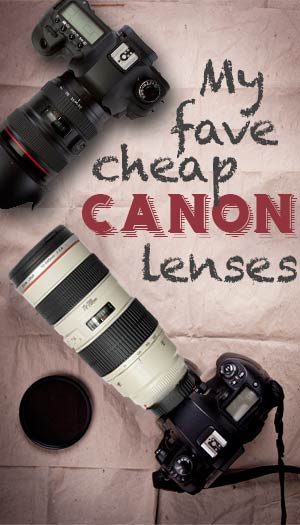





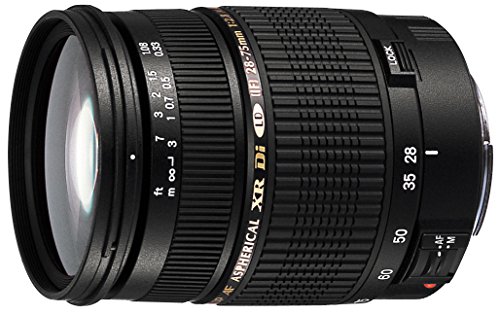
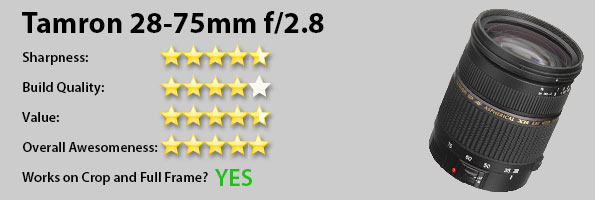
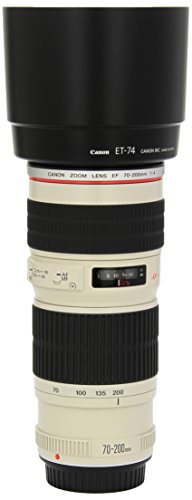
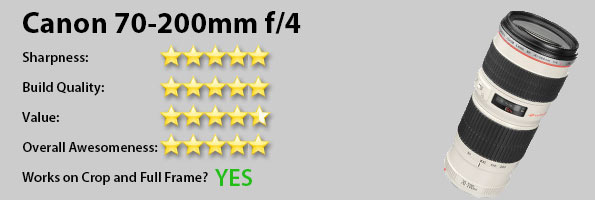

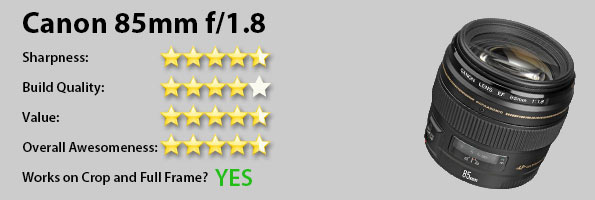

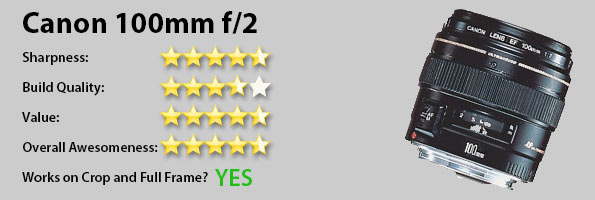

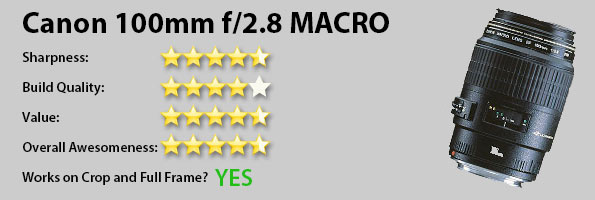


Thank you very much, this saved me a lot of research!
How does tameron 24-75 f2.8 compare against cannon 24-70 f2.8?
what is the difference between Nikon 24 pixel and Cannon 18 pixels
Hi:) love all the advice on less expensive alternatives!!! New to the photography world & currently love my 50mm & (for now) looking to invest in one that could be my everything for family indoor/outdoor portraits that will be able to be fast while chasing little toddlers. Having a hard time deciding between the 24-70mm or the 70-200mm, both seem to have there little unique pros but which would be ultimately faster to catch fidgety kids while having low lighting indoors? Thanks in advance for the help
Great article, bookm,arked!
I have a Canon Rebel T6s and a 50mm f1/8? If I want to do artistic nude (full body, studio) photography should I stick with that or go to the 85mm f1/8? Or the 50mm f1/4?
stink
If I understand you correctly you have a full frame camera. This lens is made fromth cropped frame cameras and as such would not be suited to a full frame body. It would function but would not use th entire sensor area resulting in less light transition and less pixels beIng used.
Good review and I have to sa y I agree with you on all accept the 50mm. I’d go for th metal mount version, and the 24-105 you say is sharp. Sorry but no it isn’t. Is actually quite soft and has considerable distortion at both ends of th range. That said these things are not deal breakers if you don’t mind a little tweaking in photoshop. I have one of these by the way?
I have a hard time using anything but the 85mm f1.8 most days. It’s not perfect, but the CA is fixable and the bokeh is perfect.
I do a lot of concert photography which is of course in low lighting and most venues/artists do not allow flash. I’m primarily shooting with the Tamron 10-24mm but I noticed the clarity is not where it should be and I miss a lot of shots. I have the Canon “nifty-fifty”, but that lens is not good for how close I am to the artist on stage. On this list here, which do you recommend for concert photography on a Canon 550D?
I LOVE the Canon 24-105 on the almost made it list. I bought it used and it is almost always on my camera. It is worth the extra expense and I got it half price in perfect condition by going used.
Hi thank you for the article. I’m still not sure though what canon lense I should get for shooting a school/graduation photo? I’m on a tight budget too.
Hope you can help
Thanks
I have canon 550D and I was thinking to get very good lens so I m confused and still confused I want something in range of 1000 USD or shall I get more expensive camera better .. What do u think ??
amazing for you
I just upgraded from the rebel t3i to the 6d mark ii. The difference in every aspect of the cameras is HUGE and if you do landscape, low light, or portrait photography and are willing to spend the money I’d recommend it. I noticed that in every article about cheap or old lenses nobody mentioned my 28-70 f2.8L USM. This lens is great for the price (500-600 USD) and you can find it used on amazon or eBay. Just as good as the newer 24-70L if you don’t mind a tiny loss in image quality. I’m currently torn between 3 70-200 2.8s. Tamron 70-200 f2.8 VC G2 and the two canon IS lenses. Should I get one of these or should I just get a 200 2.8 prime and a 100mm macro L, because I’m interested in macro but I want IS.
Great indepth detailed article indeed.
Wish I had seen this before. I too have a canon 24-105 L f/4 lens.
Although great for daytime and bright night time scenes, it doe not always work well in low light given that it is an f4.
So, can anyone recommend the sigma 18-35 f1.8 or the tamron lens mentioned in this article as decent lens for low light shooting?
Or even an alternative to these two.
My local department store recommended these two lens.
Many thanks.
Thanks for the article. It’s very very very helpful !!!!!
But honestly…. Some of them are not really true !!!
I don’t really think people should buy the Canon 70-200 f/4. It’s not cheap ! And the small aperture f/4 will make it a harder lens when shooting in low-light.
Also, those lenses are basically for “full frame sensor camera” I would also prefer Tamron 24-70mm f/2.8 instead of 28-75mm
Would be useful to know which are EF and which are EFs. My cameras dont support EFs but need to buy something for my wife.
I cannot see any dates on this article but I’m guessing it’s pretty old – I don’t think the Tamron 28-75mm is available any more… I think it has been replaced by the 24-70mm ƒ2.8.
If so I can also recommend the latter lens (the 24-70). I have one along with the Tamron 70-200mm ƒ2.8. Both these lenses make a good (and less expensive) substitute for the Canon versions in the triad. I don’t have one but I’m sure there’s a wide angle Tamron zoom that would be a good substitute for the Canon 16-35mm, giving you the complete triad at a very reasonable cost.
Thank you for your suggestions. I am actually looking for a new lens for my travel pictures.